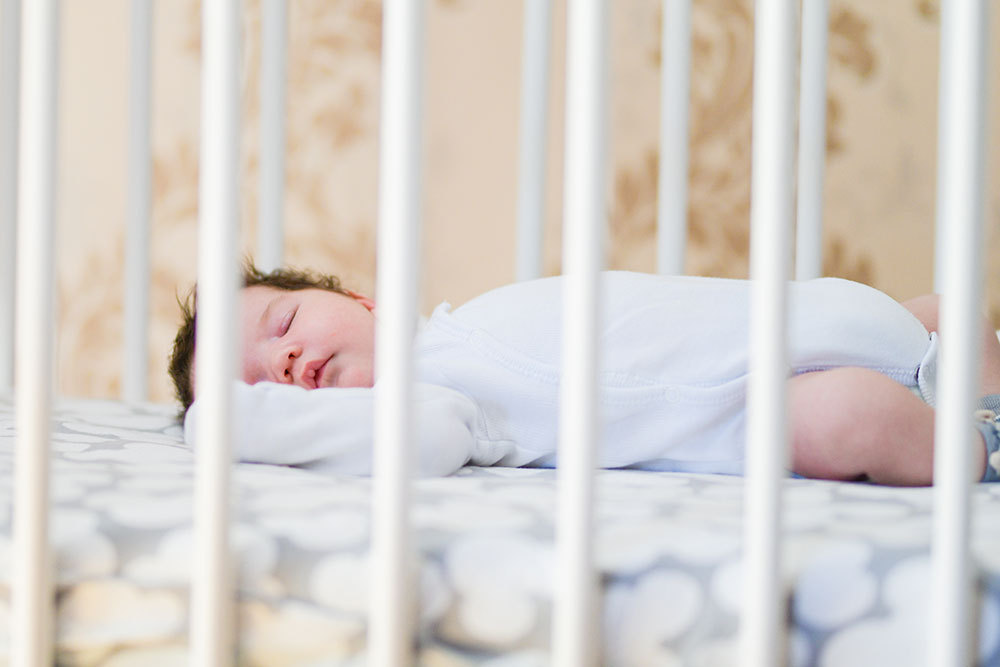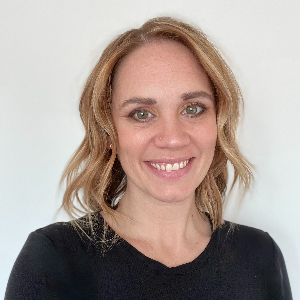Refresher: Safe Sleep Practices for Infants

The AAP’s guidelines on safe sleep are not simple suggestions—they’re actionable steps to take to protect your baby’s life.
Content warning: This article mentions distressing themes, including infant death.
Parents are constantly bombarded with new, urgent information about keeping their children safe. This sleeper has been recalled; these positioners have been known to cause suffocation; potentially harmful chemicals have been found in that bathing product. After a while, the neverending cycle can become background noise that you only half pay attention to because, most of the time, it doesn’t even apply to your family. However, one set of guidelines that every caregiver of an infant should stay up to date on is the American Academy of Pediatrics (AAP) safe sleep guidelines.
The AAP developed safe sleep rules to help prevent sudden unexpected infant death (SUID), including sudden infant death syndrome (SIDS) and death by strangulation or suffocation. In the 1990s, the AAP updated their safe sleep guidelines to instruct parents to place their babies on their backs for sleep. After this recommendation, there was a decrease in the number of sleep-related deaths in infants, but today, SUID is still the leading cause of infant death. While there is still work to be done in learning how to prevent SUID, we know that a safe sleep environment is crucial to ensuring the number of SUIDs per year does not rise.
What Are the Safe Sleep Rules?
According to the AAP, in the United States, around 3,500 infants die suddenly and unexpectedly while they are sleeping. Research has found that a safe sleep environment is essential to reducing the risk of SUID, SIDS, strangulation, and suffocation. As of 2023, the organization’s safe sleep guidelines include:
Place your baby on their back to sleep. When placing your baby on their tummy or side, the risk of suffocation increases—especially for babies not strong enough to lift their head or roll over. Even if your baby is able to roll and lift their head, it’s still best practice to put them to bed on their back for extra safety. And if you’re worried about your little one choking while sleeping on their back, the AAP notes that “your baby’s airway anatomy and gage reflex will keep that from happening.” Also, in some cases, preemies in the neonatal intensive care unit (NICU) are placed on their tummy for sleeping; however, there is a medical reason for this, and health care providers are monitoring them. Once they are discharged, they should be placed on their back to sleep.
Lay your baby to sleep on a firm, flat sleeping surface. According to the AAP, you’ll know that a safe surface is firm if your baby’s body doesn’t leave an imprint. As for what constitutes a flat surface, they say anything that inclines more than 10% is considered unsafe. Many products designed to keep a baby cozy while awake are dangerous for them to fall asleep in (such as a bouncing chair or a Boppy pillow). If your infant has fallen asleep in one of these products, gently pick them up and move them to a safe sleep space. (Car seats have some exceptions—see the AAP’s guidance on this here.)
Do not practice bed-sharing. Full stop. No exceptions. If, for some reason, your baby is in your bed with you and you worry you may fall asleep unintentionally, you should ensure there are no pillows, sheets, blankets, or other loose items that could cause your baby to overheat or suffocate. Additionally, you should not sleep with your baby anywhere else—the risk of sleep-related infant death is 67 times higher when co-sleeping on a couch, chair, or cushion. (More on the dangers of bed-sharing below.)
Keep your baby’s sleep area free of loose bedding and soft objects. As adorable as the baby blanket your grandma knitted for your little one is, it should not be placed in the crib, bassinet, or anywhere else your infant sleeps. Until they are at least 1 year old, the AAP says a baby’s sleep space should not have any loose bedding (such as blankets or sheets) or soft objects (including crib bumpers and plush toys). Stick only to a breathable fitted sheet. If you are concerned about your baby getting cold, dress them in layers (no more than one layer more than what an adult would wear in the same conditions) or use a safe, wearable blanket.
Don’t let your baby get overheated. The AAP says a baby’s SIDS risk increases if they are too warm or overheating. To avoid this, ensure they are dressed appropriately for the temperature where they are (whether awake or asleep). Once you’re home from the hospital, do not put a hat on your baby while you are indoors. Also, if you are not in the same room, monitor the temperature in their nursery to ensure they are dressed appropriately and do not risk overheating.
What is the Risk of Having an Infant Sleep With You?
When you’re in the weeds of the sleep deprivation stage, you’ll want to do just about anything to keep your baby comfortable enough for you to get just a few minutes of restful sleep. Some infants just do not want to sleep if they aren’t in their parent’s arms, which leads an exhausted parent to resort to bed-sharing. It’s understandable—you’re probably desperate—but the AAP says there is no circumstance where a caregiver should knowingly practice co-sleeping.
If you find yourself in this position, the AAP recommends placing your baby in a separate sleep space near your adult bed when you’re ready to sleep (this includes if you bring them to bed to nurse or to comfort them). Also, you absolutely should not bring your baby to bed with you for any reason if you have been drinking alcohol, using marijuana, or have taken a medication that makes you drowsy. Your baby’s risk of sleep-related death is ten times higher when you are under the influence of a substance that makes it harder for you to wake up.
Are Weighted Sleep Sacks Safe?
We adults love our weighted blankets. They’ve been shown to improve sleep quality for adults with anxiety, sleep disorders, attention deficit hyperactivity disorder (ADHD), and autism spectrum disorder (ASD). They’re cozy, comfortable, and comforting. However, despite the fact that weighted sleep sacks, swaddles, and blankets are on the market—they are not recommended for babies.
In June 2023, the AAP called on the government to provide stronger oversight of these products. Currently, these products are not regulated or required to meet federal safety standards (because there aren’t any). The AAP acknowledges that there are efforts to enact voluntary safety standards for weighted infant products, but they argue that without regulation, these unrequired standards “will send parents and caregivers the incorrect message that these products are safe.” They also note that research on the safety and efficacy of these products is lacking and that “the evidence available at this time does not indicate that weighted swaddle products are safe, nor does it demonstrate that they are effective in helping babies sleep longer or with fewer disruption.” The letter also states that “it is hypothesized that impaired arousal may contribute to risk of SIDS, so a product that decreases arousal may increase the risk of SIDS.”
How Else Can You Reduce the Risk of SUID?
The AAP’s basic safe sleep guidelines are the minimum a caregiver should do to reduce their little one’s risk of SUID. If you’d like to add extra safeguards, the AAP also offers the following sleep recommendations:
- Room share with your baby until they are at least 6 months old (room sharing can decrease the risk of SIDS by as much as 50%).
- Breastfeed or feed your baby expressed breastmilk for at least 6 months, ideally up to 12 months (this can reduce the risk of SIDS by 64%).
- Give your baby a pacifier when you put them down to sleep for naps or at night (but never hang one from their neck or attach it to their clothing while they are sleeping).
- Get prenatal care and avoid substance use during pregnancy.
- Don’t use nicotine or smoke during pregnancy or after your baby has arrived.
- Ensure your baby is seen for every recommended well-child visit and gets appropriate vaccinations based on the AAP’s suggested schedule.
- If it helps, safely swaddle your baby for sleep (discontinue swaddling when your baby is ready to roll over on their own).
- Give your baby tummy time while they are awake every day.
- Don’t rely on wearable heart rate and pulse oximetry monitors. (Note: It is OK to use these products, but don’t let them give you a false sense of security.)
Keeping your baby safe while sleeping is essential to reducing their risk of SUID. For more information on these guidelines, visit the AAP’s caregiver website.








